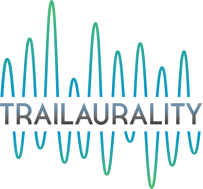Trolls World Tour
/Justin Timberlake and Anna Kendrick continue their roles as core creative partners for the Trolls movie franchise, and this time they lean even more heavily into the musical angle.
This go around, the story is built specifically to accommodate and explore distinctive genres of music—funk, country, techno, classical, pop, and rock are included. While one could ask questions of representation and why one genre is picked over another, such a question wouldn't be possible to answer independently, and one could argue a relatively well-differentiated swathe of styles is on offer.
Nonetheless, the idea here is that Queen Barb (Rachel Bloom) and her father, King Thrash (Ozzy Osbourne) are out to make rock music the sole genre and only music available in the Trolls universe.
The idea of musical genre itself has always been more about marketing and categorization for the ease of it than about describing the music itself; in a world where streaming now accounts for the dominant share of activity in the recorded music industries, such collaborative efforts as found in this latest Trolls instalment perhaps speaks to an industry desire to retain the idea of centralized star power. Featuring various artists in films to reinforce their ongoing dominance in an increasingly fractured, hybridized, long-tail listening landscape is perhaps also a driving force behind the recent popularization of the musical biopic (see the past year’s Bohemian Rhapsody, Rocketman, and A Star is Born, for example).
In Trolls, Mary J. Blige, George Clinton, Anderson Paak (funk), Kelly Clarkson (country), J Balvin (reggaeton), Ester Dean (pop), and conductor Gustavo Dudamel (classical) all figure into the film’s soundtrack and story.
The trailer itself doubles as a medley that crosses genres as the cast is introduced. A scant-yet-identifiable moment of Daft Punk’s “One More Time” segues into the classic intro riff to Ozzy Osbourne’s “Crazy Train.” At 1:31 the humorous sense of gravitas accorded to the trolls’ pinky promise is elevated by the musical counterpoint of the epic music choir.
The next section intersperses music and one-liners much in the vein of most any comedic trailer. After the musically-synched casting title card (which, again, foregrounds the musical collaborators / stars), the audience is given “one more thing”—as many comedy trailers do—in the form of what might best be informally called the “Kenny G” troll.
All these cues, and Justin Timberlake’s centrality, seem squarely focused on one primary demographic: young, millennial families—those who grew up with N’Sync as teenagers twenty years ago, and with the Trolls figurines before this—it is, in some ways, a more overt manifestation of the Pixar ethos of designing content that scales to reach children and adults like at different levels.
Notably, the trailer ends not with the film’s title, but simply with the release date—April 17th—and preceding that, with a card touting “new music by Justin Timberlake” and an all-star list of collaborators.
Again, what’s perhaps most notable about this trailer is the way that the film in essence acts as a major promotional tool for Justin Timberlake’s next big musical release—or is it vice-versa? In the current media landscape dominated by the ascendance of streaming, we seem to be entering a time when musicians are increasingly leveraging and using film media and the theatre system to maintain a sense of exclusivity, power, and promotional gatekeeping in a way that isn’t so obvious anymore for a generation who tend to go to Spotify and YouTube both to listen to favorite tunes and discover new music—the post-MTV generation.
As the New York Times recently noted, the streaming era for both music and film has arrived—and the key players in Hollywood and the music industries are getting closer than ever to maintain their hold on the star system.
— Curtis Perry








